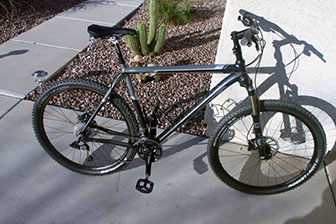What's New?
HOW KNEESAVERS HELP CYCLING
KNEE PAIN
Due to the repetitive motion aspect of cycling, slight biomechanical imperfections can lead to pain syndromes. A slightly too low saddle, or too narrow Q factor can lead to certain soft tissues (ligaments, tendons or other connective tissue) becoming irritated and inflamed from overuse, not unlike secretaries who develop carpal tunnel syndrome from repetitive typing motion aggravated by sitting in a poor biomechanical position.
Many cyclists complain about cycling knee pain that can be due to a variety of factors. In my experience one of the more common but overlooked factors is the Q factor distance.
This is particularly true for those who walk with their feet toed-out (so-called "Duck Foot" gait pattern), those that are larger or have a wide pelvis (women in particular), those with a bowlegged structure which leads to a mal-alignment of the foot, knee and hip and frequently lateral knee pain.
Frequently people have a prior traumatic unilateral problem where the foot is now permanently pointed outward after a fracture and/or surgery. The heel(s) constantly rub against the crankarm with each revolution leading to the shoe(s) wearing out sooner in addition to having a knee pain syndrome. Kneesavers help cycling knee pain by widening the Q factor distance.
In the early days, my predecessors recommended adding a washer or two between the pedal and crankarm to widen the Q factor. The obvious limitations are that the distance created can only be 2 - 3 mm and doing so leaves less pedal threads in the crankarm, a potentially somewhat hazardous situation that puts more stress on the remaining threads that are threaded into the crankarm. Kneesavers specifically move the feet significantly wider ( 20 mm at a minimum on each side) and do so in a way that assures all the pedal threads are threaded into the pedal extenders.
Kneesavers are made of stainless steel or Titanium to withstand maximum stress and force put on the pedal, even by large cyclists. One caveat is to avoid using Kneesavers in carbon fiber crankarms if you weigh more than 200 pounds as I am not convinced carbon fiber will be able to withstand those pedal forces created by larger cyclists.
Kneesavers help cycling knee pain and other biomechanical imperfections discussed above by creating the optimal cycling biomechanics so that the threshold of the cycling pain syndrome is pushed essentially eliminated, thus relieving pain. There are MANY testimonials on this website illustrating all the varied applications and relief cyclists have used Kneesavers that show how Kneesavers help cycling knee pain. I have thousand of satisfied customers from all over the world who use them and have done so for over 24 years. They come with a money back guarantee that they will relieve your pain syndrome or your money back. They are made in the USA by a California based machinist who can also custom make any size needed. They also come in 1/2" threads only for use with the native pedals on indoor stationary bikes.
For an in-depth Power Point presentation of all aspects of bike fitting including the Q factor that illustrates all the different cycling pain syndromes and how they are best relieved, see my presentation "The Importance of Proper Q Factor Alignment in Cycling" elsewhere on this website.

Randy,
Got them [Kneesavers™] yesterday, and all I have to say is WOW what a difference.
I also got some Wellgo MG-1 Pedals and I have to say is PERFECT, my big duck feet now fit!!!
With my new handlebar / stem riser I NOW FIT ON THE BIKE!!!
This thing LOOKS HUGE!!!
Again thanks and there will be no need to make any changes!!!
THEY ARE PERFECT!!!
Mike

